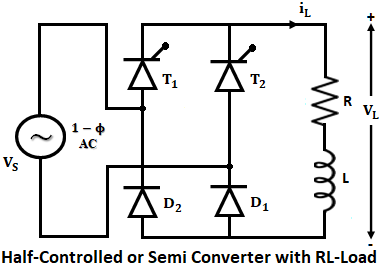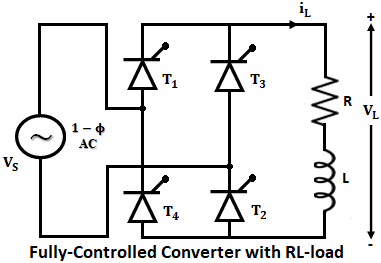The phase-controlled converter gives controllable dc voltage at the output terminals from ac supply to power dc loads. Depending upon the amount of power handled and application requirement there are two types of converters namely, semi or half-controlled converter and fully-controlled converter.
Using a half-controlled converter a positive dc output voltage with unidirectional current is obtained. Whereas in the case of fully-controlled converters the dc output voltage is both positive and negative i.e., the output voltage is reversed, with the unidirectional current. Let us see the difference between a semi or half-controlled converter and a fully-controlled converter.
Comparison Between Half Controlled and Fully Controlled Converter :
| Comparison | Half Controlled Converter | Fully Controlled Converter |
|---|---|---|
| Circuit | ||
| Power Switching | In this, converter-controlled devices are SCR’s and diodes. | In this, converter-controlled devices are only SCR’s. |
| Quadrant Operation | It performs only one quadrant operation i.e., forward motoring (I quadrant) operation. | It performs two-quadrant operation i.e., forward motoring (I quadrant) and reverse braking (IV quadrant) operation. |
| Input Power Factor | High power factor. | Low power factor. |
| Control of Output Voltage | Limited control. | Wider control. |
| Average Output Voltage Vout | ||
| Inversion Mode (α > 90°) | Not possible | Possible |
| Freewheeling | Internal freewheeling exist. | External freewheeling diode required. |
| Application | Preferred for heating and lighting control. | Preferred in dc motor drives. |




